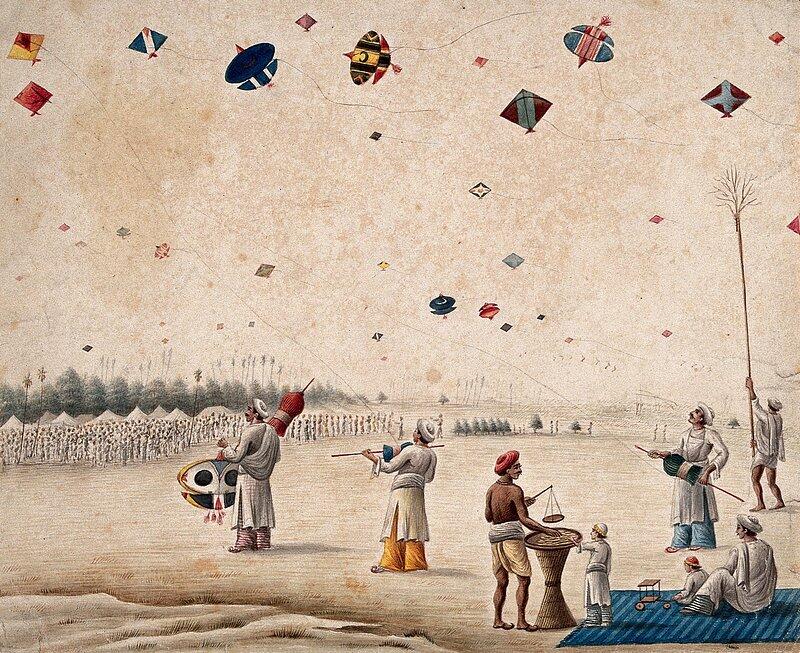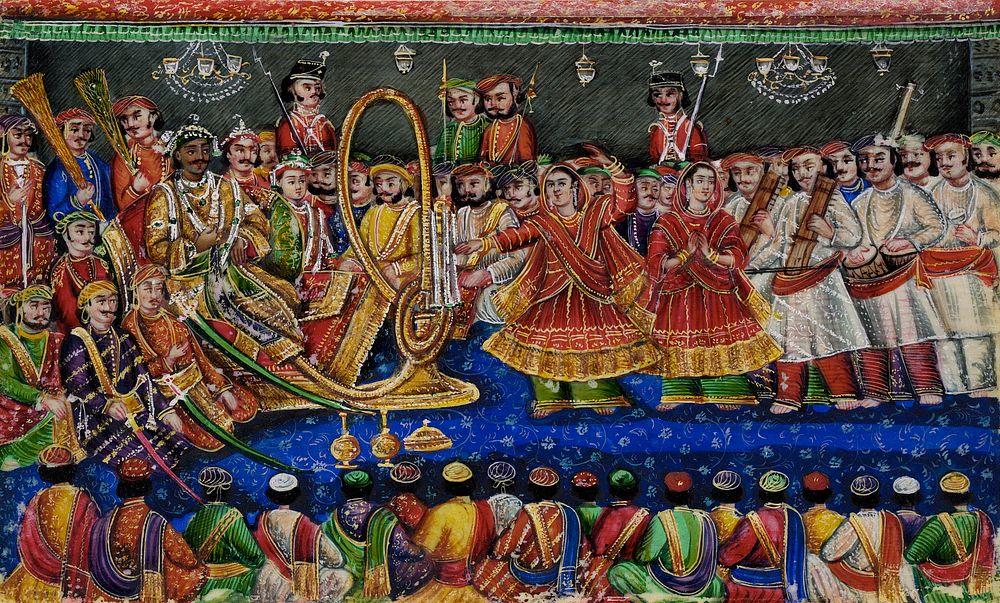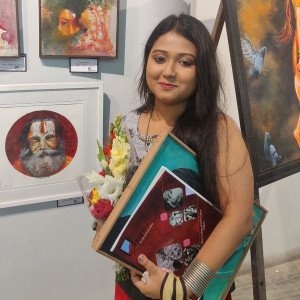India has a distinctive and varied culture, expressed in its art, particularly through paintings. The origins of Indian art trace back to antiquity, reflecting the civilization's rich diversity and ever-evolving nature. The progression of Indian paintings, from complex cave art to sophisticated court masterpieces, presents a captivating exploration of creativity, spirituality, and societal transformations across time.

Indian Historical Paintings: An Overview
The great cultural variety of Indian art is prominently showcased in the vibrant, unique, and captivating folk art and crafts. Diverse painting styles are prominent in different locations, each embodying traditions, rituals, and philosophies transmitted over generations. Historically, most Indian art styles were manifested as wall paintings or murals. Over time, urbanization introduced these art forms on paper, canvas, and fabric. Indian painting techniques not only exemplify the indigenous culture but also serve as a quintessential manifestation of creative expression via uncomplicated but distinctive compositions.
Ancient Paintings of India
In the ancient past, Indian paintings predominantly included religious themes, illustrating deities and the cultural aspects of the respective area. Artists utilized natural colors like charcoal, powdered foliage, rice flour, turmeric, and lime to produce vivid hues for their pictures. Cave art and mural paintings were essential in ancient Indian painting, depicting events from Hindu epics like the Ramayana and Mahabharata.
The oldest paintings found in India are from the Stone Age and were unearthed in caves.
These paintings were created to convey narratives and safeguard cultural heritage. The ancient period of Indian paintings established the groundwork for subsequent creative styles and methods, creating a rich and diverse heritage that continues to inspire contemporary painters.
Medieval Indian Paintings
In the medieval era, Indian art witnessed a proliferation of many regional styles. Notable among these were Rajput and Pahari paintings, which illustrated royal portraiture and courtly existence. The royal artwork required regal preparations as well. The artists employed vivid hues, elaborate detailing, and gilded accents.
Numerous artistic movements developed in India throughout the medieval era, each characterized by its unique style and methodology.
They encapsulated the quintessence of Hindu mythology and historical occurrences while integrating aspects of Mughal and Persian art. The medieval period was a pivotal milestone in the development of Indian paintings, enhancing the visual environment with depth and complexity.
Modern Indian Paintings
The growth of Indian art reflects modern topics and styles, demonstrating a blend of traditional and contemporary aspects. Contemporary artists experiment with many techniques and materials, producing inventive and thought-provoking works that examine new narratives and viewpoints.
The Bengal School of Art originated in the early twentieth century, marking the commencement of the modern age in Indian art.
The spectrum of genres in contemporary Indian paintings is extensive, encompassing both abstraction and realism. These paintings effectively illustrate the use of vivid colors, complex details, and distinctive substances like rice paste, cow dung, and plant sap, among others. The contemporary period of Indian painting embodies the quintessence of creative expression and cultural development. This exceptional study provides comprehensive insights into Indian painting and Indian art as a whole.

Popular Types of Indian Paintings
| Madhubani | Madhubani, a highly esteemed type of Indian art, arose in the Mithila area of Bihar as a kind of wall art. This remarkable folk art form remained undiscovered by the outside world until it was revealed by British colonial official William G. Archer in 1934 during his assessment of the damage following the significant Bihar earthquake. Archer was astonished by the exquisite artwork adorning the bare inner walls of the residences. The allure of Madhubani is in its unadorned and poignant representation of culture and customs. The designs feature striking geometric patterns, symbolic imagery, and mythological settings. The equilibrium between the vividness of hues and the simplicity of its designs distinguishes Madhubani from other painting techniques. Bharni, Katchni, Tantrik, Godna, and Kohbar represent the five unique styles of Madhubani painting. |
| Warli | This ancient Indian painting is a 2500-year-old legacy. The Warli paintings from the Thane and Nasik regions of Maharashtra are intricately connected to nature and the social rites of the tribe. Warli paintings depict the quotidian activities of the local populace, including agriculture, dance, hunting, and prayer. Historically, women artists employed twigs to create vibrant patterns with rice paste on the mud walls of tribal dwellings to commemorate harvests or weddings. Elementary geometric patterns in white on a red or yellow background are employed to illustrate quotidian life scenarios. Warli art, characterized by its linear forms and monochrome palette, evokes the execution of prehistoric cave paintings. |
| Bengal Pat or Kalighat Style | The Kalighat painting style originated in the mid-19th century in the vicinity of the Kali Temple in Calcutta. The designs on paper were created by a group referred to as "patuas," therefore the designation Kalighata Pata. They illustrated quotidian situations and legendary deities in a straightforward yet enchanting manner, evolving into the renowned Kalighat school of painting. Kalighat artists mostly utilize natural Indian pigments such as indigo, ochre, Indian red, gray, blue, and white. The rapid, fluid, and unimpeded outline is a notable feature of Kalighat painting style. This painting technique has influenced other painters, notably Jamini Roy, a distinguished figure in Indian art. |
| Phad | Phad is a narrative scroll painting tradition originating from Rajasthan, with a history spanning a millennium. Depictions of local deities and heroes are illustrated on horizontal fabric scrolls in shades of red, yellow, and orange. The Phad scrolls illustrate battles, tales of adventure, legendary romances, and the opulence of Indian royal realms. The Phad painting technique captivates observers with its ability to incorporate several narratives inside a single piece while preserving artistic qualities. |
| Kalamkari | This ancient organic technique of hand and block printing, dating back 3000 years, was conventionally employed for the creation of narrative scrolls and panels. This exceptional folk art is closely associated with Persian themes. Kalamkari, named after the term 'kalam' meaning pen, is a traditional art form that has been passed down through generations in Andhra Pradesh. The stylized animal figures, floral patterns, and mihrab designs prevalent in Kalamkari paintings are also present in Kalamkari fabrics. Kalamkari art predominantly utilizes earthy hues such as indigo, green, rust, black, and mustard. |
| Miniatures | This technique was introduced to India by the Mughals in the 16th century and is seen as a significant milestone in the history of Indian art. It evolved into a unique style incorporating Islamic, Persian, and Indian features. The artwork is executed using natural stone pigments on a paper substrate known as "wasli". Miniatures use mineral pigments, gemstones, conch shells, as well as gold and silver. The distinctive characteristics of miniature painting are meticulous brushwork, complexity, detail, and stylization. In India, the miniature painting style has evolved into several different schools, including Kangra, Rajasthan, Malwa, Pahadi, Mughal, and Deccan, among others. |
| Gond | The Gondi tribe of central India fashioned these vivid paintings using a pattern of delicately organized dots and dashes. The tribals intricately recreate mythical narratives and oral histories through traditional melodies, natural environments, significant events, and ceremonies, characterized by rich detail and vibrant colors. Historically, colors were obtained from natural materials such as cow dung, plant sap, charcoal, pigmented soil, mud, flowers, and leaves. Gond painters currently utilize commercial water-based pigments for painting on paper and canvas. Currently, Gond art has evolved from a tribal art form with anonymous creators to include globally recognized painters such as Jangarh Singh Shyam, Venkat Shyam, Bhajju Shyam, and Durga Bai Vyam, among others. |
| Kerala Murals | The illustrious Kerala mural paintings are among the most renowned frescoes globally, with profound spiritual significance as they illustrate subjects from Hindu mythology, epics, the playful exploits of Krishna, and the mystical representations of Siva and Shakti. They also narrate the exploits of famous heroes from a past epoch. This classic painting style originates from the seventh and eighth centuries AD and is distinguished by vibrant images, assertive strokes, and intense colors. Kerala mural art typically employs ochre-red, yellow ochre, bluish-green, white, and pure hues. |
| Patachitra | Patachitra is a cloth scroll painting tradition from Odisha, focused on mythical and religious subjects in Indian art. The patachitra painting style is characterized by bold, powerful contours, brilliant colors such as white, red, yellow, and black, along with ornate borders, which are esteemed by art enthusiasts around. |
| Pichhwai | Pichhwai developed as wall hangings situated behind the principal deity in Krishna temples in Nathdwara. They recount tales about Lord Krishna. Secular themes are progressively integrated into the Picchwai style of art with the advent of commercialization. Picchwais are vibrant and elaborate artworks featuring hidden symbolism within their creative themes. This unique devotional painting tradition has been transmitted over generations and exemplifies spirituality in art. |
| Tanjore | Tanjore, or Thanjavur, painting is an old Indian folk art that began in the town of Thanjavur in South India. This is a typical South Indian painting style that originated about 1600 AD. These paintings are distinguished by their use of gold foil, which imparts a surreal appearance. The colorful panel painting is executed on a wooden plank, with a god as the central focus, and features the use of semi-precious stones and vivid hues. The primary topics of Tanjore paintings are Hindu deities, saints, depictions from Hindu Puranas, Sthala-Puranas, and mythical narratives. These are panel paintings executed on a wooden plank, so they are referred to as “palagai Padam,” signifying “picture on a wooden plank.” A remarkable aspect of Tanjore paintings is that the luster of the gold leaf employed in these artworks endures indefinitely. Tanjore paintings are exquisite. |
| Kalamezhuthu | Kalamezhuthu is a traditional Indian ceremonial art form conducted in the temples and sacred forests of Kerala. It is performed as a tribute for the blessings of deities such as Kali, Ayyappan, Bhadrakali, and the snake god. The depictions of these deities are created on the floor with natural paints and powders. Typically, five varieties of colored powders are employed: white – rice flour, black; charcoal powder, yellow; turmeric powder, green; powdered green leaves; and red – a combination of turmeric powder and lime. The artist used their own hands to create the artwork, beginning from the center and expanding outward. Upon completion of the 'Kalam', which refers to the floor drawings or paintings, the artist performs ceremonial songs accompanied by instruments to venerate the god as per custom. The 'Kalam' starts at a designated time but is promptly erased upon the completion of the accompanying ceremonies. Kalamezhuthu is a distinctive art form, and the practitioners of this craft include |
| Rajput | Rajput paintings, or Rajasthani paintings, began and thrived in the royal courts of Rajputana in Rajasthan throughout the 17th and 18th centuries. The primary pictures include the Hindu epics, Mahabharata and Ramayana, together with themes from Hindu mythology. The paintings exhibit intricate intricacies and vibrant colors. The colors utilized are derived from minerals, botanical sources, mollusks, vegetables, and valuable gemstones. Additionally, pure gold and silver were utilized. The formulation of these pigments required weeks and months, and the brushes employed are crafted from fine squirrel hair. These Rajput paintings were predominantly executed on the walls of palaces, interior chambers of forts, and Havelis. Rajput paintings encompass two styles: the Rajasthani style, associated with the Rajput courts in Rajasthan, and the Pahari style, linked to the Rajput courts of the Himalayan foothills. |
| Mysore | This technique has developed in the city of Mysore, Karnataka, utilizing thin gold leaves, akin to Tanjore paintings. The predominant topics of these paintings are Hindu gods, deities, and scenes from Hindu mythology. The making of a Mysore artwork involves several processes. The initial procedure entails the artist creating a preliminary drawing on the substrate, utilizing cartridge paper affixed to a wooden foundation. Subsequently, they prepare a mixture, referred to as 'gesso paste,' composed of zinc oxide and Arabic gum. The paste is employed to create a little raised carving effect on areas of the paint that want improvement. The gold foil will thereafter be affixed to the surface. The last painting is completed with watercolors. After the paint has completely dried, thin paper is employed to cover the surface and is gently smoothed with a soft stone. Artists utilized hues derived from vegetables and minerals, consisting of various plant and mineral pigments as well as flowers. Brushes made from diverse materials such as squirrel, camel, and goat hair were created and utilized. Grass blades have sometimes been utilized for creating sharp lines. Observers of this artistic style are frequently captivated by its elegance, aesthetic appeal, and intricacy. |

Legacy & Importance of India Historical Paintings
Indian paintings help preserve and promote its culture. These living traditions convey communal stories, religious beliefs, and social conventions. These art forms are living traditions that grow while retaining their roots due to generations-old techniques and symbolism.
They teach us critical thinking and cultural literacy by examining the creative, historical, and cultural circumstances in which Indian art was developed. For example, interpreting Rajput paintings' mythology and daily life or modern Indian art's socio-political criticism requires rigorous examination that increases intellectual and cultural knowledge.
Indian paintings allow the nation to communicate its culture and ideals with the globe. India shares its rich creative past through exhibitions, cultural exchanges, and partnerships with international artists. These interactions promote mutual respect and understanding by emphasizing Indian art's universal themes and human experiences.
Indian paintings offer a vivid glimpse into the nation's rich cultural and artistic heritage. From the intricate frescoes of Bhimbetka to the elegant Mughal miniatures, these artworks reflect the diverse traditions, religious narratives, and socio-political landscapes of their time, making them an invaluable window into India’s vibrant history and artistic evolution.
















